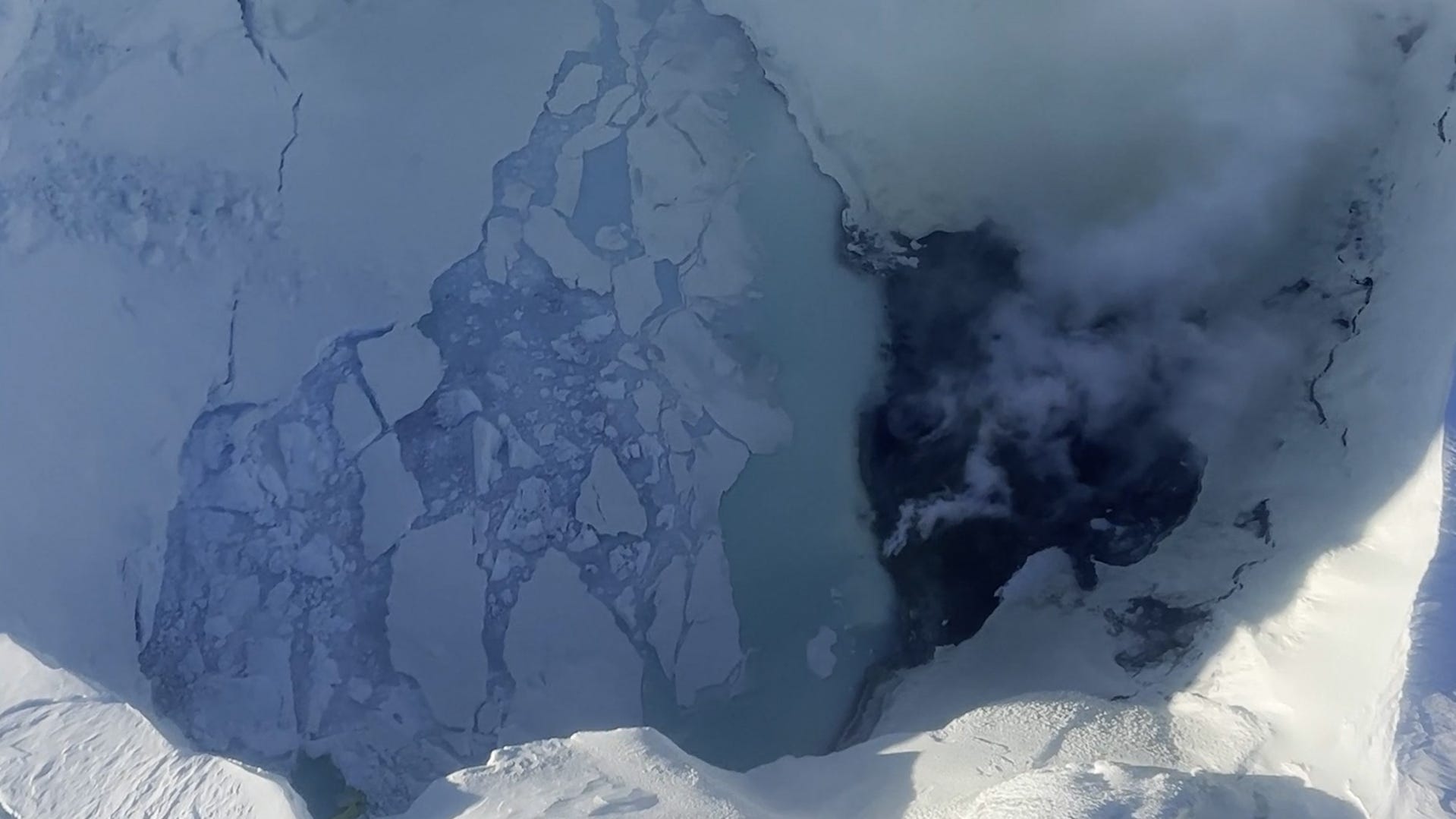Eruption watch at Alaska's Mt. Spurr volcano continues, earthquake swarms reported

A swarm of more than 100 shallow earthquakes at Alaska's Mount Spurr that began Sunday night and ran to Monday morning suggest the volcano could be moving closer to an eruption.
"It's about a 50/50 chance right now," said Matt Haney, the scientist in charge of the Alaska Volcano Observatory in Anchorage. "So it's equally likely it will or will not progress to an eruption."
Clearly visible from Anchorage, the state's most populous city, a large explosion could be severely disruptive, especially to air traffic.
The 11,070-foot mountain last experienced explosive eruptions in 1953 and 1992. It's 75 miles to the west of Anchorage, where those previous eruptions shut airports and even impacted water supplies.
Mount Spurr is not the kind of lava-spewing volcano familiar from Hawaii, but instead has historically ejected huge plumes of volcanic ash as high as 45,000 feet into the atmosphere, disrupting air travel between the United States and Asia via the great circle routes that link places like New York and Tokyo by following the curve of the earth.
"The flights to Japan, Korea and elsewhere in Asia go right over those volcanos, that's why they're so closely monitored," said Michael Manga, a volcanologist at the University of California, Berkeley.
As Haney notes, "volcanic ash should not get in jet airplane engines."
The Alaska Volcano Observatory has the volcano at its "yellow "advisory level because the mountain has been showing "unrest" for about 11 months, but an eruption is not certain.
Observatory scientists are closely monitoring Mount Spurr for any signals that it might blow, using seismic data, cameras and satellite data. They are also using sensors that listen for infrasound frequencies below human hearing.
Based on previous eruptions, they expect to see significant warning signals first, including changes in earthquake activity, rising, subsiding, tilting, or bulging ground, the appearance of a new lake at the summit or fumaroles, which are fissures, cracks or holes in the mountain releasing volcanic gases and steam.
The one warning sign that hasn't come yet is something called tremors. "Tremors are a long-duration shaking of the ground that can go on for 10 minutes or even longer," Haney said.
If Mount Spurr were to begin producing tremors – which it hasn't yet – that would be an indication the unrest would proceed to eruption, he said.
"There's been a lot of seismicity and the ground is deforming," said Manga.
"The last eruption in 1992 had ten months of unrest," so there was ample notice, Manga said. That year there were three separate explosions, in June, August and September.
In June and September, the ash blew away from Anchorage. But in August it blew toward the city, resulting in an eighth of an inch of ash falling across the metropolis.
"That might not sound so bad but it's enough to cover everything. You don't want to breathe it and it's abrasive, so it's going to damage cars and surfaces and roads," Manga said.
So many people got out their garden hoses after that eruption covered cars and yards with fine grains of magma that there was record water demand, Haney said.
"(Water usage) went up 150% in the days immediately after the August explosion," he said.
A long history of explosive eruptions
Mount Spurr is one of a string of volcanos on the Aleutian Islands that are part of what's known as the Ring of Fire, created by the Pacific plate sinking below the North American plate.
On July 9, 1953, an eruption sent a plume of ash 30,000 feet into the sky and lasted for an hour. "An Air Force jet reported that it flew into the ash cloud for just a moment, but emerged with sandblasted paint and a frosted windscreen," the observatory noted. That eruption shut down the Anchorage airport for two days.
Another eruption in August of 1992 heated a small lake in the mountain's crater to the boiling point. Later, a plume of ash exploded out, reaching 47,500 feet into the atmosphere. The ash closed the Anchorage airport for 20 hours.
From 2004 to 2006, the mountain also underwent dramatic ice cauldron hydrothermal events, where a volcanic eruption happens under a glacier, creating a depression, or "cauldron" on the surface of the ice. These can often result in the explosive release of steam and significant debris flows.
The cauldron that was created by rising magma in 2004 resulted in a lake with an eerie grayish-turquoise color probably caused by dissolved sulfur compounds, according to a paper in the Bulletin of the Global Volcanism Network.
Volcanologists have also identified multiple significant eruptions throughout the geological record, around 1650, 3200 BC, 5500 BC and 6000 BC.
"It seems like it has big eruptions every 1,000 or so years," Manga said.